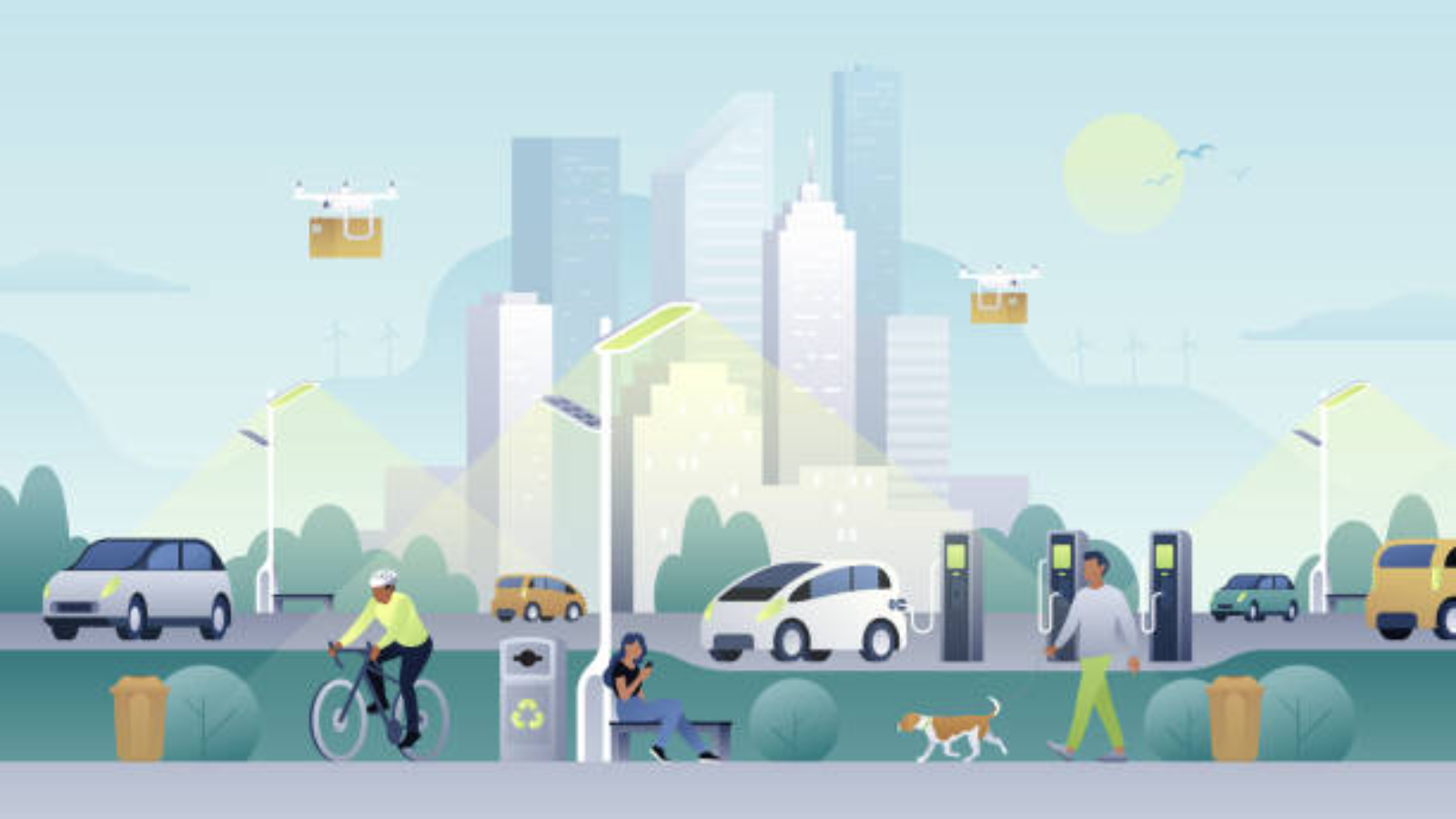In this Article
Introduction
As urban population continue to grow, cities worldwide are turning to smart technologies to address challenges such as traffic congestion, pollution, and inefficient resource management. Smart cities use data, technology, and citizen engagement to create more efficient, sustainable, and livable urban environments.
This blog post will explore seven exemplary smart city initiatives that demonstrate how technology can enhance urban life and provide a blueprint for future development.
Smart City Examples
1. Intelligent Traffic Management
One of the most pressing issues in urban areas is traffic congestion. Smart cities are implementing intelligent traffic management systems to alleviate this problem:
- Adaptive Traffic Signals: These systems use real-time data to adjust traffic light timings based on current traffic conditions, reducing congestion and improving traffic flow.
- Smart Parking Solutions: Sensors in parking spaces provide real-time information on availability, helping drivers find parking more quickly and reducing the time spent searching for a spot.
- Public Transportation Integration: Real-time tracking and data sharing between different modes of public transport (buses, trains, trams) make it easier for commuters to plan their journeys efficiently.
2. Sustainable Energy Management
Energy consumption is a significant concern for urban areas. Smart cities are adopting sustainable energy management practices to reduce their environmental footprint:
- Smart Grids: These use digital technology to monitor and manage the distribution of electricity more efficiently, reducing energy waste and improving reliability.
- Renewable Energy Integration: Solar panels, wind turbines, and other renewable energy sources are being integrated into the urban infrastructure to reduce reliance on fossil fuels.
- Energy-efficient Buildings: Smart buildings use advanced materials and technologies to optimize energy use, such as automated lighting and heating systems that adjust based on occupancy and weather conditions.
3. Enhanced Public Safety
Safety is a top priority for any city. Smart cities leverage technology to enhance public safety and emergency response:
- Surveillance and Monitoring: Advanced cameras and sensors monitor public spaces for suspicious activities, helping law enforcement respond more quickly to potential threats.
- Emergency Response Systems: Real-time data from various sources, including social media, can be used to coordinate emergency responses more effectively.
- Predictive Policing: Data analytics can help predict crime hotspots and allocate police resources more efficiently, preventing crimes before they occur.
4. Efficient Waste Management
Waste management is a critical aspect of urban living. Smart cities are implementing efficient waste management systems to keep their environments clean and sustainable:
- Smart Bins: Equipped with sensors that monitor waste levels, these bins alert waste management services when they need to be emptied, optimizing collection routes and reducing operational costs.
- Recycling Initiatives: Technology-driven recycling programs encourage residents to sort their waste more effectively, increasing recycling rates and reducing landfill use.
- Waste-to-Energy Plants: These facilities convert waste into energy, providing a sustainable way to manage waste and generate power.
5. Citizen Engagement Platforms
Engaging citizens in the decision-making process is crucial for the success of any smart city initiative:
- Mobile Apps: These platforms allow residents to report issues, provide feedback, and access city services conveniently.
- Online Portals: Citizens can participate in surveys, polls, and forums, ensuring their voices are heard in city planning and development.
- Community Events: Smart cities organize events and workshops to educate residents about new technologies and initiatives, fostering a sense of community and collaboration.
6. Sustainable Urban Planning
Urban planning is essential for creating livable and sustainable cities. Smart cities use technology to optimize urban planning processes:
- 3D Modeling: Advanced modeling tools help visualize and plan urban development projects more effectively.
- Data-driven decision-making: Analyzing data on traffic, population density, and environmental impact informs better planning decisions.
- Green Spaces: Incorporating parks and green spaces into urban planning promotes a healthier and more sustainable living environment.
7. Enhanced Connectivity
Connectivity is the backbone of any smart city. Ensuring that residents and businesses have access to high-speed internet is crucial:
- Public Wi-Fi: Widespread Wi-Fi coverage ensures that everyone can stay connected, whether at home, work, or in public spaces.
- 5G Networks: The deployment of 5G technology provides faster and more reliable internet connections, supporting the various smart city applications.
- IoT Integration: Connecting devices and systems through the Internet of Things (IoT) enables seamless communication and data sharing, enhancing the efficiency of city services.
Conclusion
The examples above showcase how smart city initiatives can transform urban living by leveraging technology and data. These projects not only improve the quality of life for residents but also promote sustainability and economic growth. As cities continue to evolve, adopting smart city practices will be crucial for addressing the challenges of urbanization and creating more livable environments.
How Can We Help?
The AlphaX ecosystem offers solutions to many of the challenges discussed in this article. By providing advanced data analytics, sustainable infrastructure technologies, and citizen engagement platforms, AlphaX helps cities implement smart city initiatives effectively. To learn more about how AlphaX can support your city’s transformation, visit AlphaX Contact Us.
References
Related Blog Posts
How Smart Cities Connect: Getting Started with Edge AI and IoT Technology
How to Get Started with Edge AI and IoT Technologies in Smart Cities: Overcoming Integration Challenges In recent years, the concept of smart cities has evolved from a futuristic Read More
5 Step Strategy: Ensuring Security and Privacy in 15-Minute Smart Cities
Introduction Ensuring security and privacy in 15-minute smart cities is a critical challenge as urban areas become increasingly connected through IoT and edge AI technologies. These cities aim to Read More
What is a smart city and the challenge of legacy systems
How to Get Started with Integrating Legacy Systems in Smart Cities Smart cities are transforming urban landscapes by leveraging technology to improve the quality of life for residents. However, Read More




